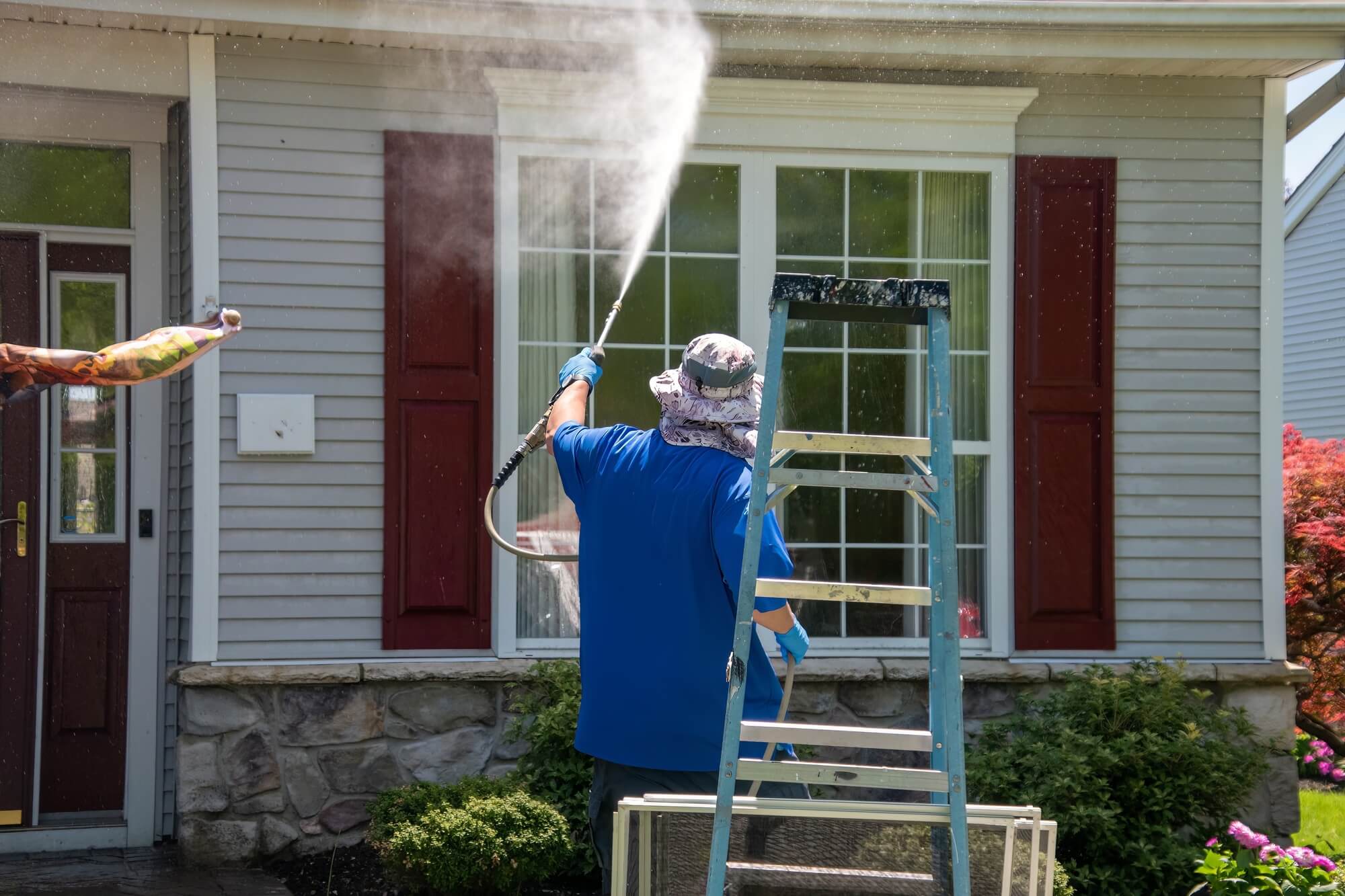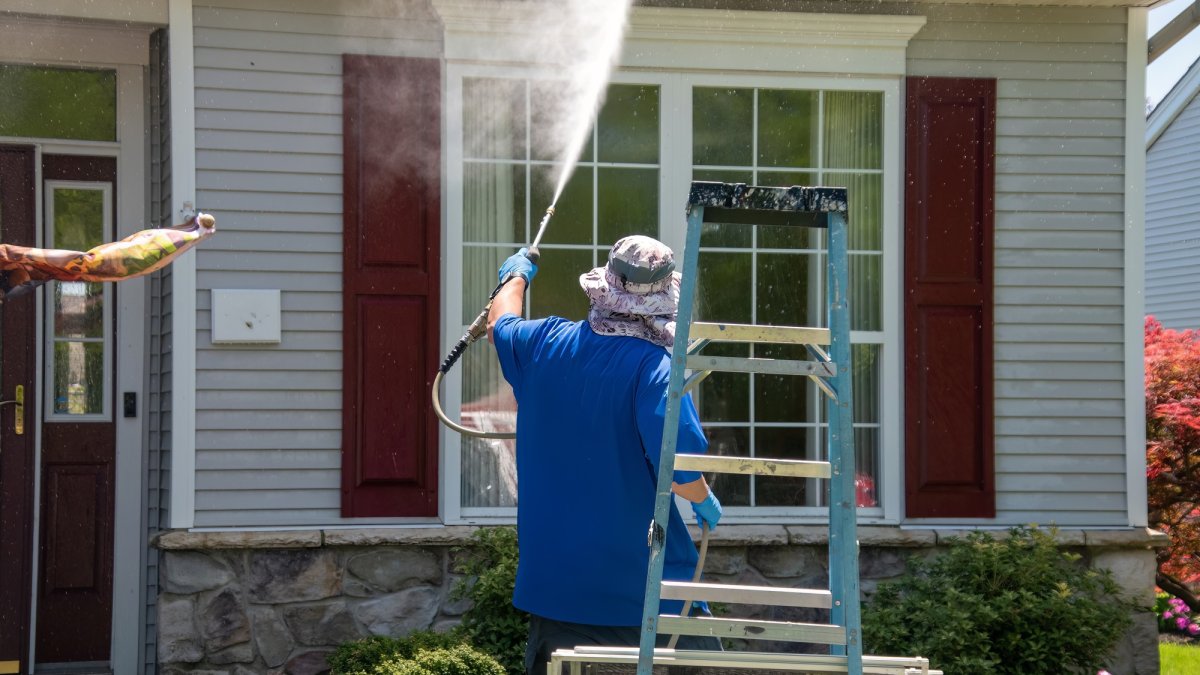
Pressure washing offers a swift and impactful solution for revitalizing the appearance of your home’s exterior. Ideal for enhancing your property’s aesthetic, whether it’s for a sale, a seasonal cleanup, or simply to keep it looking its best, this method can dramatically transform and maintain the allure of your home.
However, before you unleash the power of high-pressure water on your home, it’s essential to take some crucial pre-cleaning steps. These steps not only ensure a successful pressure washing job but also help protect your property and make the process smoother.
This guide will walk you through the essential pre-cleaning measures to help you prepare your home for pressure washing so you can achieve stunning results while safeguarding your investment.
Pre-Cleaning Steps Before Home Pressure Washing
Whether you will do the pressure washing yourself or hire services from Ortiz Pro Wash, it’s essential to follow these pre-cleaning steps:
Safety First
Before you begin any pressure washing project, it’s crucial to prioritize safety. Pressure washers can be powerful tools, and if not used correctly, they can cause injury or damage to your property. If you’re planning to do it yourself, here are some safety tips to keep in mind:
- Wear appropriate safety gear, including eye protection, ear protection, and closed-toe shoes.
- Familiarize yourself with the pressure washer’s manual and operating instructions.
- When using electric pressure washers, keep a safe distance from electrical outlets and power lines.
- Be cautious when working on ladders or elevated surfaces, as the force of the water can be unbalancing.
Inspect Your Property
Before you start pressure washing, closely examine your home’s exterior. Pre-cleaning assists you in identifying areas at home that may pose potential hazards, like damaged surfaces, falling debris, or any obstructions in cleaning the area. This lessens the possibility of injuries and accidents.
Repairing cracks, loose siding, or chipped paint before pressure washing can prevent water from infiltrating and causing more extensive damage. Knowing what to target will help you plan your pressure-washing approach more effectively.
Disconnect And Protect
Before pressure washing, protect electrical outlets, light fixtures, and other vulnerable areas. Cover them with plastic or waterproof materials to prevent water contact and causing damage. Additionally, shut off power to outdoor electrical outlets and fixtures.
Clear The Area
By clearing away potential hazards and loose debris from the area beforehand, you can allow the high-pressure water to focus exclusively on tackling tougher stains and substances such as oil, persistent stains, mold, mildew, and built-up grime. This careful preparation will contribute to achieving more efficient and faster cleaning results.
Remove any obstacles, furniture, or decor near the area you plan to pressure wash. Clearing the area will prevent object damage and allow easier access to all parts of your home’s exterior. Cover delicate plants and shrubs with plastic sheeting to shield them from the force of the water and detergents.
Choose The Right Pressure Washer
Selecting the appropriate pressure washer for your project is essential. The pressure washer’s power, measured in pounds per square inch (PSI), and its flow rate, measured in gallons per minute (GPM), should match the cleaning task at hand.
Different surfaces and levels of dirt require varying levels of pressure and water flow, so consult your pressure washer’s manual or seek professional advice if you’re uncertain.
Gather The Necessary Supplies
Collect all the tools and cleaning agents you’ll need for the job. Checking and preparing your pressure washer and equipment in advance ensures they work properly. Common supplies include:
- Pressure washer
- High-pressure hose with nozzles
- Safety gear (goggles, ear protection, gloves)
- Detergent or cleaning solution suitable for pressure washing
- Scrub brushes or attachments (for stubborn stains)
- Extension wand (for hard-to-reach areas)
- Water source (hose or bucket)
- Plastic sheeting or drop cloths (to protect objects and plants)
Test The Pressure Washer
Before you start pressure washing your entire home, perform a test run in a small area to ensure the pressure and spray pattern is appropriate for the surface.
Based on your test, adjust the pressure level and choose the proper nozzle for the type of surface you’re cleaning. Use a broader spray pattern for softer surfaces and a narrower one for tougher stains.
Conclusion
Doing some simple things before you start pressure washing is important. Covering up stuff you don’t want to get wet or damaged shows you’re thinking ahead. Testing the pressure washer on a small spot helps get the settings right so you clean well but don’t damage it. And working top to bottom keeps cleaned areas looking good. Following these and all the tips detailed in this article means you’ll get great results from pressure washing. Your home will look beautiful again. The little bit of time you take to prepare is worth it in the end.
Caleb Turner
Related posts
Stay connected
Today's pick
- Safety Essentials Every CNC Operator Should Follow DailyCNC machining demands precision, consistency, and discipline—but above all, it requires strict attention to safety. Whether you’re working with mills, lathes, routers, or grinders, every machine has the potential to cause serious injury if mishandled. That’s why CNC operators must follow safety protocols daily, no... The post Safety Essentials Every CNC Operator Should Follow Daily […]

